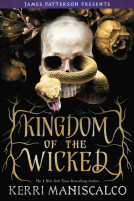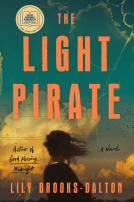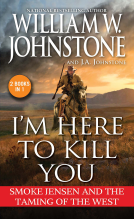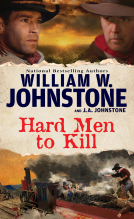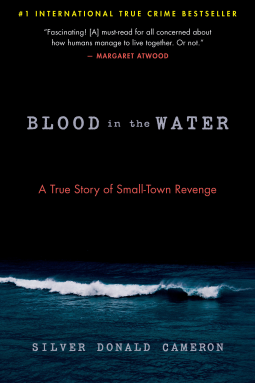
Blood in the Water
A True Story of Small-Town Revenge
by Silver Donald Cameron
This title was previously available on NetGalley and is now archived.
Send NetGalley books directly to your Kindle or Kindle app
1
To read on a Kindle or Kindle app, please add kindle@netgalley.com as an approved email address to receive files in your Amazon account. Click here for step-by-step instructions.
2
Also find your Kindle email address within your Amazon account, and enter it here.
Pub Date Nov 23 2021 | Archive Date Oct 29 2021
Steerforth Press | Steerforth
Talking about this book? Use #BloodintheWater #NetGalley. More hashtag tips!
Description
“Superb... an instant true crime classic.” —Publishers Weekly (starred review)
A masterfully told true story, perfect for fans of Say Nothing and Furious Hours: a brutal murder in a small Nova Scotia fishing community raises urgent questions of right and wrong, and even the very nature of good and evil.
In his riveting and meticulously reported final book, Silver Donald Cameron offers a stunning, intricate narrative about a notorious killing and its devastating repercussions.
Cameron’s searing, utterly gripping story about one small community raises a disturbing question: Are there times when taking the law into your own hands is not only understandable but the responsible thing to do?
In June 2013, three upstanding citizens of a small town on Cape Breton Island murdered their neighbor, Phillip Boudreau, at sea.
While out checking their lobster traps, two Landry cousins and skipper Dwayne Samson saw Boudreau in his boat, the Midnight Slider, about to vandalize their lobster traps. Like so many times before, the small-time criminal was about to cost them thousands of dollars out of their seasonal livelihood.
Boudreau seemed invincible, a miscreant who would plague the village forever. Meanwhile the police and local officials were frustrated, cowed, and hobbled by shrinking budgets.
One of the men took out a rifle and fired four shots at Boudreau and his boat.
Was the Boudreau killing cold blooded murder, a direct reaction to credible threats, or the tragic result of local officials failing to protect the community? As many local people have said, if those fellows hadn't killed him, someone else would have...
Advance Praise
Shortlisted for The 2021 Crime Writers of Canada Awards of Excellence.
“This is an instant true crime classic.” —Publishers Weekly (starred review)
"How a small fishing community responded to the violent death of one of its most notorious citizens . . . Cameron artfully links the central drama to broader discussions about socio-economic inequality, natural resource management, police interrogation tactics, and the consequences of a loss of faith in law and order . . . An often gripping, insightful examination of a well-known crime and the Acadian milieu in which it took place."—Kirkus Reviews
"Silver David Cameron knew intimately the Cape Breton community where the brutal murder of a local who was vandalizing lobster traps took place. But instead of that insider knowledge giving him too narrow a focus, it enables him to see beyond the broad strokes of the story -- and so bring to life ideas about power, law, vigilantism and community."—Toronto Star
A "masterful true account of a celebrated small-town murder."—The Globe and Mail
"It became known as the 'murder for lobster' case. But that description . . . comes nowhere near capturing the complexities of the crime and its effects on the local community. [Cameron] successfully weaves together courtroom drama, memoir, and an insightful exploration of people and place . . . While much time is spent in a courtroom, Blood in the Water is not particularly concerned with innocence and guilt. It's a book about place, relationships, and our responsibilities to each other."—Quill & Quire
"A dramatic narrative set in a unique, lovingly drawn setting, where a story about one small community has universal resonance. This is a story not about lobster, but about the grand themes of power and law, security and self-respect."—CBC
"A vibrant portrait of a hardscrabble town . . . Blood in the Water demonstrates how even the quietest towns are capable of explosive violence."—Foreword Reviews
Available Editions
| EDITION | Other Format |
| ISBN | 9781586422936 |
| PRICE | $17.00 (USD) |
| PAGES | 256 |
Featured Reviews
 Mary Ellen K, Reviewer
Mary Ellen K, Reviewer
Phillip Boudreau was an incorrigible criminal with, according to some prison psychiatrists, the moral development of a five-year-old. Living on the small Canadian Maritimes island of Isle Madame, Phillip brazenly steals, vandalizes, threatens, and—as we find out late in the book—worse. This is a fishing community, and Phillip commonly not only steals lobsters from neighbors’ traps, he sells the lobsters on the town wharf, and he cuts their trap lines and vandalizes their traps.
Though Phillip has been committing crimes for years, and been arrested and jailed many times, much of the time the Mounties and the Fisheries officials are unsuccessful catching him. And, as some townspeople say, Phillip’s threats are worse than the crimes, because you can’t feel safe, and law enforcement don’t do anything about them.
The years of fear, anger and frustration come to a head one sunny day in June, as lobstermen James Landry, his son-in-law, and their hired man see Phillip stealing their lobsters and taunting them as he cuts the lines. The lobstermen come back to port, but Phillip never does. His speedboat is found drifting, missing its motor.
Cameron vividly depicts life on Isle Madame, a place where everybody knows everybody else, and people don’t tend to lock their houses or vehicles (even with Phillip around). He describes the court case in detail, the prosecution’s version of the case, defense counsels’ versions, the court’s instructions, the verdicts, sentencing, and the aftermath for the community.
Cameron asks the question: what do you do in a small community with someone like Phillip Boudreau, when the legal system has failed? What is the effect of violence on the community? This is a striking story not just of crime, but of a unique way of life, informed by Acadian, native tribal, and Anglo traditions.
This is an in-depth look at a Canadian true crime story about a thief, Phillip Boudreau, who had been tormenting people on Cape Breton Island for decades. When he wasn’t in jail, he liked to steal lobster, lobster traps, or just cut the lines to the traps if he felt like someone had been talking to authorities about him. He also liked to threaten to burn their homes down frequently, and steal anything he could find in and around their homes. Strangely enough, he was also known for his acts of generosity to people in need, and there were many who liked him as well. It all came to a head when he was caught stealing lobsters and cutting trap lines, but stayed ahead of the fishing boat they belonged to and taunted them, laughing. A good non-fiction book about culture and crime on the island. Advance electronic review copy was provided by NetGalley, author Silver Donald Cameron, and the publisher.
 Reviewer 343665
Reviewer 343665
This is a well written book about an unusual situation. Lobstermen tolerated the illegal actions, mainly theft, continuously perpetrated by one among them. Then they took action. They took care of the problem and virtually no one said they were in the wrong.
A good true crime novel. The story is well told with plenty of background information so the reader can understand and follow the story. It is a great look at the problems within the enforcement of laws that is sometime faced by the police.
Thank you to #NetGalley for the ARC in exchange for my honest review.
I was excited to read and review Silver Donald Cameron’s Blood in the Water: A True Story of Revenge in the Maritimes (Viking 2020) because its story takes place in Petit de Grat, a small Acadian fishing village off the coast of Cape Breton Island. My family is spread across Nova Scotia, but my roots are in New Waterford, located at the tip of Cape Breton. Cape Breton Island is known for its breathtaking natural beauty and welcoming islanders, so it was surprising to learn that in June of 2013, Phillip Boudreau was murdered in Petit de Grat after three local fishermen saw him vandalizing their lobster traps. Infamously referred to as the “Murder for Lobster” case by the media, Cameron’s text takes a deep dive into the crime as well as the community that it occurred in, complicating the media’s salacious and oversimplified explanation of the crime.
Phillip Boudreau is described as a complicated figure within his community. One of the many wonderful things about Cameron’s text is that he does not ask you to take his word for it—he brings you to the people who lived it. He interviews the people of Petit de Grat and relays their perspectives in mini-sections he calls “Island Voices.” These parts of the book were some of my favorites because you get a real sense of the community and the realities of the case from the people who were there. Cameron describes Phillip as someone who was frequently in trouble with the law and at odds with many folks in the community. One community member similarly stated that “Phillip would steal the beads off Christ’s moccasins. But then if you needed them, he’d turn around and give them to you” (28). Another mentioned that “He’d steal…but if you needed it, he’d give it to you. I used to call him Robin Hood” (29). One particular quote within the “Island Voices” section perfectly describes Cameron’s approach to the case: “But as bad as he was, he never hurt nobody. He never deserved what happened to him” (28).
Cameron does not downplay the harm Phillip created in his community through his thievery and the general chaos he could often create. But he also acknowledges that murder was not the solution to Petit de Grat’s Phillip problem, and he relays the complex community dynamics that were at play both pre-and post-murder. The story of the murder itself has been contested by the people that lived through it. However, the generally accepted version is that Craig Landry, James Landry and Dwayne Samson went out on their fishing boat and saw Phillip messing with their lobster traps. They become angry, as this was not the first time Phillip had stolen from their traps and/or vandalized them. Phillip, as well as his boat, was shot by one of the men in the fishing boat. Phillip’s boat began to capsize, and allegedly, to make his body sink, they tied an anchor around him until he fell to the ocean floor. Cameron goes through the various stories that were told with warranted skepticism, and he criticizes the ways that the facts of the case were established by the court. This book is just as much about a murder that occurs in a small community as it is about the failures of the Canadian justice system. Cameron spends time going through all court proceedings (proceedings he attended as a journalist) and attempts to makes sense of the twists and turns of our often-futile system. His critical eye translates well: through Cameron, we can see where the justice system failed Petit de Grat, the perpetrators, and Phillip himself.
Another aspect of Cameron’s text that I loved was the history he gives of Acadians in Nova Scotia. Cameron never loses sight of the fact that Petit de Grat is an Acadian town. In his surveying of the community, we are made to understand how the history of Acadians effect towns like Petit du Grat years later. Cameron also explains what the general character or code of Acadians are, describing it as “the Golden Rule, with teeth. It’s a system of rewards and responsibilities, developed by the community, that shapes general behaviour” (53). Cameron also relays the history of major industry in Cape Breton (mining, fishing), religious histories, and Acadians’ relations with the Mi’kmaq peoples. These sections were fascinating and well told.
What I enjoyed most about this book was the way it not only criticized the Canadian criminal justice system, but also turned to Indigenous systems of legal knowledge to make sense of the case. In chapter fourteen, “The Nature of Law,” Cameron states that:
“There are other legal traditions, however, and some of the most sophisticated and sensitive ones belong to the First Nations…As the great Anishinaabe legal scholar John Borrows explains, law is ‘what provides guidance for people in their lives,’ and it is found in ‘the things that deserve respect in the world. So, if you see a good set of behaviours from elders, you would find law emanating from those people, because they are worthy of respect, because they have demonstrated that worthiness through their actions, the way they have talked and they’ve lived’”(230).
Cameron also quotes Borrows as saying that Indigenous law comes from non-human sources as well:
“If you see a bird and the way that bird takes care of its young, and you recognize in that interaction there is something that you should be taking into your own life…you would find law in that source as well” (230).
Cameron uses Borrows’ legal wisdom and understanding to reflect upon Phillip’s case, stating that when looking back on it, “one can discern two distinct systems of law. One is the formal system of prosecutors and juries and courthouses. The other one, the informal community system, is very like the Indigenous system, rooted in a community’s daily life, its history, and its most cherished values” (231). Cameron acknowledges that both systems failed in this case, but while the failures of the community system has caused “its members anguish and self-criticism,” the formal legal system “barely even suspects that it failed” (231). The beauty of Cameron’s book is that he leaves no stone unturned. He surveys the community and its history while also relaying the story of the case and the legal failures therein. In so many ways, Cameron’s book resists equating this case to a classic story of revenge. Instead, his book is a cultural artifact, a story about a complex community who is still picking up the pieces from this disaster while the rest of the world has moved on. True crime fans will love this book, but because it goes above and beyond the classic true crime structure, all lovers of non-fiction will appreciate this excellent text.
Please add Blood in the Water to your Goodreads shelf.
Don’t forget to follow True Crime Index on Twitter and please visit our Goodreads for updates on what we’re reading!
About the Writer:
Jesyka Traynor is an academic living in Kingston, Ontario, Canada. When she’s not writing or researching her dissertation, she’s consuming all the true crime and non-fiction she can find time for. Jesyka holds two degrees in English literature and is currently pursuing a doctorate in contemporary Californian literature. Her work on women in twenty-first century true crime is forthcoming from Crime Fiction Studies.
This is really interesting! Silver Donald Cameron really captures the essence of Isle Madame from its people to its culture and highlights everything that led to the tragedy with Philip Boudreau. He masterfully captures the timeline of events and explores them in detail in exquisite writing that really envelops the reader and makes them feel like an Isle Madame resident.
Well written crime novel. I was interested from beginning to end. Thanks to publisher and NetGalley for this read.
I am not as familiar with Canadian true crime stories, so this book was my first exposure. It was a fantastic read! I am saddened to hear that it is his last book. The overall question this book addresses is "is it okay to take the law into your own hands?" While I would never advocate for committing murder, or crime period, I could see why the events unfolded in the manner they did. Cameron did lay the background very well, and I was engaged from the first page.
 Reviewer 266180
Reviewer 266180
Well Crafted And Immersive…
Fascinating account of a true crime. Is taking the law into your hands ever the right thing to do? It happens. Well crafted and immersive reading which effectively captures equal sides of this occurrence. Both moving and emotional.
In June 2013, three men killed a neighbour. This neighbour, however, was no angel himself. But did he deserve to die? And how did things get to the point where this ended up as a solution? I found this book really interesting. It didn’t just cover the killing, but it talked about the Acadian community and the history of the area, all of which had an impact on how the community worked together. I also really enjoyed the interviews with the locals. It really felt like the author had taken the time to talk to a variety of different people, which meant it felt like a balanced portrayal of the parties involved. I do believe it also helped that he’d lived in the area a time, and so he was able to really tease out the differences between a murder in a small fishing village in Nova Scotia and a murder in a big city. This isn’t a book where you necessarily put it down with the feeling justice has been done. As I finished it, it was easy to see how everybody had been let down. The killers had tried time and again to get help to protect their families and livelihood, only to be told there was nothing to help. The victim had been let down by a system that didn’t seem to be concerned with helping him. Was justice done? Read and decide for yourself.
 Eric E, Reviewer
Eric E, Reviewer
Should a true-crime recounting of a murder ever be “enjoyable?” And if so, how can one aptly describe an experience as pleasurable when it involves death?
This is the Catch-22 when it comes to books like Silver Donald Cameron’s Blood in the Water. Like the true-crime book Midnight in the Garden of Good and Evil by John Berendt, Blood in the Water is filled with a collection of amusing people and circumstances in such a way that the recounting of a murder and the subsequent trial is both compelling and amusing at times.
Blood in the Water is similar to watching a short video clip of a person’s mishap that at first appears to be innocently humorous until the realization that the mishap was actually pretty serious.
Another way to describe Cameron’s book would be to imagine a blending of Berendt’s book, the historical background of Say Nothing by Patrick Radden Keefe, with the quirkiness of the Netflix documentary The Legend of Cocaine Island.
In June of 2013, three Acadian fishermen of Petit de Grat, Isle Madame, Cape Breton Island, Nova Scotia, Canada, fed up with the habitual and decades-long criminality of Philip Boudreau, decide it is time to take matters into their own hands and end up killing Boudreau while he is vandalizing their lobster cages.
Through descriptions, Boudreau is almost able to be imagined as a real-life gadfly and troublemaker similar to the fictional character Ernest T. Bass from the classic television series The Andy Griffith Show, but only in a more serious and dangerous way. For decades, Boudreau was not only known for minor acts of misbehavior, but much more serious ones such as threatening to burn down the homes of people if they complained, which also included threats to law enforcement personnel if they took action against his acts of criminality.
Boudreau also bore a duality of either being liked and tolerated or intensely despised for his behavior.
In dealing with not only the murder and subsequent trial, like Keefe’s Say Nothing, Cameron provides an in-depth, but accessible history of the Acadian people of the region and of their culture. For example, unlike the legal system of the United States being largely guided by legal precedents and original foundations, the legal system of this region has been allowed to modify by accepting how the changes in culture and society are dynamic and ever-changing, and such evolution should be taken into account in legal matters.
Cameron’s examination of Acadian society allows the reader to fully grasp the uniqueness of the region and its citizens, which adds to the complexity of how difficult it was to curtail Boudreau’s behavior, especially when people were worried about their homes being burnt to the ground with them in them. Acadians are very community-oriented, forgiving, and with a practice of helping neighbors in need while in a community where doors are not locked at night or when people are not in their homes.
Blood in The Water is recommended to fans of true crime novels with legal matters and well-researched backgrounds.
Netgalley provided a copy of Blood in the Water with the promise of a fair review.
This review was originally published at MysteryandSuspence.com.
 Wendy M R, Book Trade Professional
Wendy M R, Book Trade Professional
Thank you to Netgalley for an advanced copy of this book in exchange for an honest review.
I found this book captivating, so well-written and compassionate. A brilliant account of a crime. Recommended.
An extremely well researched and wonderfully told about an incident that never should have happened. The author leaves us wondering whether we really knows what happened and "who done it".
 Reviewer 823951
Reviewer 823951
In his riveting and meticulously reported final book, Silver Donald Cameron offers a stunning, intricate narrative about a notorious killing and its devastating repercussions.
Cameron’s searing, utterly gripping story about one small community raises a disturbing question: Are there times when taking the law into your own hands is not only understandable but the responsible thing to do?
In June 2013, three upstanding citizens of a small town on Cape Breton Island murdered their neighbor, Phillip Boudreau, at sea.
While out checking their lobster traps, two Landry cousins and skipper Dwayne Samson saw Boudreau in his boat, the Midnight Slider, about to vandalize their lobster traps. Like so many times before, the small-time criminal was about to cost them thousands of dollars out of their seasonal livelihood.
Boudreau seemed invincible, a miscreant who would plague the village forever. Meanwhile the police and local officials were frustrated, cowed, and hobbled by shrinking budgets.
One of the men took out a rifle and fired four shots at Boudreau and his boat.
Was the Boudreau killing cold blooded murder, a direct reaction to credible threats, or the tragic result of local officials failing to protect the community? As many local people have said, if those fellows hadn't killed him, someone else would have...
The storyline kept me glued to my Kindle through the whole book! I definitely recommend reading this book! Its well worth reading! Thank you Netgalley and the publisher for sharing this book with me!
This was unlike any other true crime novel I’ve ever read. Full of facts not only on the crime but on the history of the place where the crime was committed and the people who live there, as well as the voices of those who knew both the victim and the perpetrators, this book shows that not everything is as black or white as the law allows.
I’m super glad I got the chance to read this one.
Thank you NetGalley, Steerforth Press and Silver David Cameron for the advanced copy in exchange for my honest opinion.
 Reviewer 785465
Reviewer 785465
It's a true crime book based on a real-life situation. I like the way the author just goes all out with the background information and all TMIs. I like the book and enjoy it more than I thought.
Thanks to Netgalley for the copy!
 Denice L, Reviewer
Denice L, Reviewer
True crime stories are so often as good as any fictional story written today. A man is killed after many years of constant crime and disregard for his neighbors. The lack of action by those sworn to protect the public and preserve the community have placed these duties on the shoulders of the citizens. When these citizens take action, should they be treated as criminals or officials enforcing the law?
Readers who liked this book also liked:
L.M. Montgomery, Crystal S. Chan, Kuma Chan
Children's Fiction, Comics, Graphic Novels, Manga, Teens & YA
Jodi Picoult; Jennifer Finney Boylan
General Fiction (Adult), Literary Fiction, Women's Fiction
Nigel Henbest; Simon Brew; Sarah Tomley; Ken Okona-Mensah; Tom Parfitt; Trevor Davies; Chas Newkey-Burden
Entertainment & Pop Culture, Humor & Satire, Nonfiction (Adult)
John Galsworthy, Shaun McKenna, Lin Coghlan
Entertainment & Pop Culture, Literary Fiction, Romance
Cynthia Leitich Smith; Kate Hart; Eric Gansworth; Marcella Bell; Darcie Little Badger; Karina Iceberg; Kaua Mahoe Adams; Andrea L. Rogers; Cheryl Isaacs; Christine Hartman Derr; Brian Young; K. A. Cobell; Jen Ferguson; A. J. Eversole; Byron Graves; Angeline Boulley; David A. Robertson
Children's Fiction, Multicultural Interest, Teens & YA
William W. Johnstone; J.A. Johnstone
General Fiction (Adult), Historical Fiction

